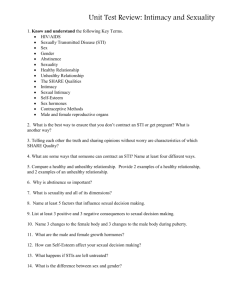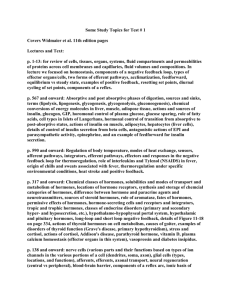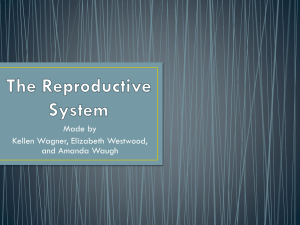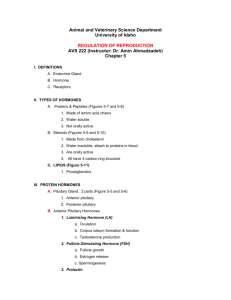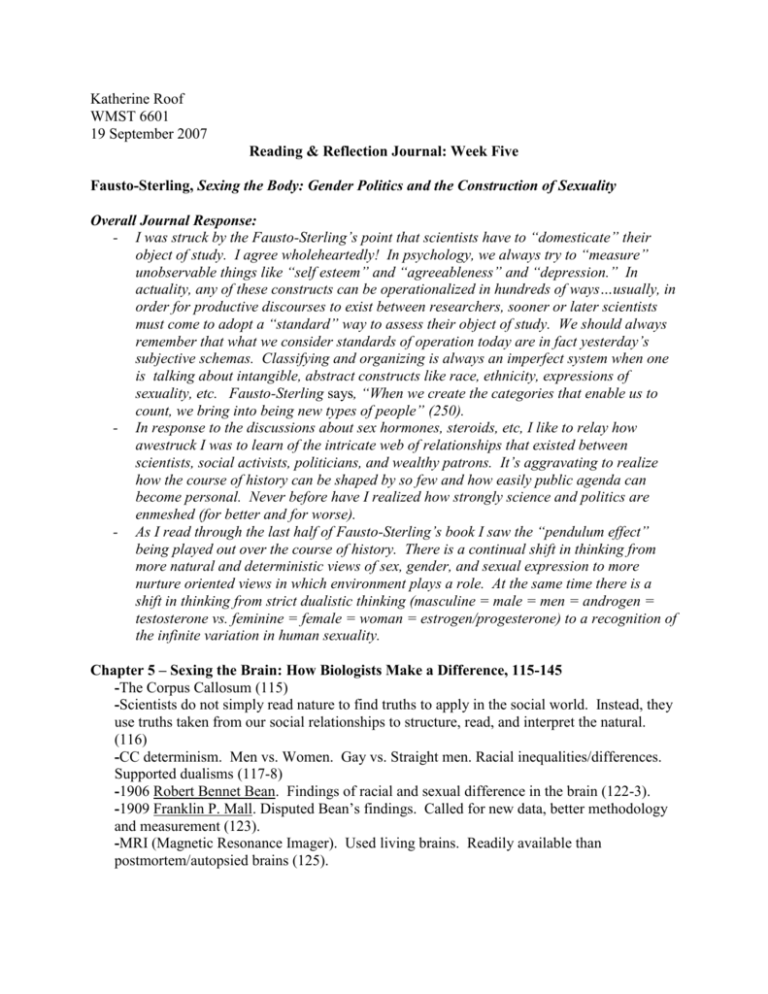
Katherine Roof
WMST 6601
19 September 2007
Reading & Reflection Journal: Week Five
Fausto-Sterling, Sexing the Body: Gender Politics and the Construction of Sexuality
Overall Journal Response:
- I was struck by the Fausto-Sterling’s point that scientists have to “domesticate” their
object of study. I agree wholeheartedly! In psychology, we always try to “measure”
unobservable things like “self esteem” and “agreeableness” and “depression.” In
actuality, any of these constructs can be operationalized in hundreds of ways…usually, in
order for productive discourses to exist between researchers, sooner or later scientists
must come to adopt a “standard” way to assess their object of study. We should always
remember that what we consider standards of operation today are in fact yesterday’s
subjective schemas. Classifying and organizing is always an imperfect system when one
is talking about intangible, abstract constructs like race, ethnicity, expressions of
sexuality, etc. Fausto-Sterling says, “When we create the categories that enable us to
count, we bring into being new types of people” (250).
- In response to the discussions about sex hormones, steroids, etc, I like to relay how
awestruck I was to learn of the intricate web of relationships that existed between
scientists, social activists, politicians, and wealthy patrons. It’s aggravating to realize
how the course of history can be shaped by so few and how easily public agenda can
become personal. Never before have I realized how strongly science and politics are
enmeshed (for better and for worse).
- As I read through the last half of Fausto-Sterling’s book I saw the “pendulum effect”
being played out over the course of history. There is a continual shift in thinking from
more natural and deterministic views of sex, gender, and sexual expression to more
nurture oriented views in which environment plays a role. At the same time there is a
shift in thinking from strict dualistic thinking (masculine = male = men = androgen =
testosterone vs. feminine = female = woman = estrogen/progesterone) to a recognition of
the infinite variation in human sexuality.
Chapter 5 – Sexing the Brain: How Biologists Make a Difference, 115-145
-The Corpus Callosum (115)
-Scientists do not simply read nature to find truths to apply in the social world. Instead, they
use truths taken from our social relationships to structure, read, and interpret the natural.
(116)
-CC determinism. Men vs. Women. Gay vs. Straight men. Racial inequalities/differences.
Supported dualisms (117-8)
-1906 Robert Bennet Bean. Findings of racial and sexual difference in the brain (122-3).
-1909 Franklin P. Mall. Disputed Bean’s findings. Called for new data, better methodology
and measurement (123).
-MRI (Magnetic Resonance Imager). Used living brains. Readily available than
postmortem/autopsied brains (125).
-Scientists must domesticate their object of study (we lose sight of this process). Simplifying
body parts in order to layer some conceptual order onto the daunting complexity of the living
body is the daily bread of the working scientist (127).
-But the corpus callosum, splenium, genu, isthmus, rostrum, and anterior and posterior
midbodies, as represented in the scientific paper, are literary fictions. (127)
-One is left to assign meaning to a fictionalized abstraction, and the space opened up for
mischief becomes enormous (130).
-Isthmus, implicated links to gender, handedness, sexual orientation (131)
-Meta-analysis (N=49 studies), Katherine Bishop and Douglas Wahlsten: men have slightly
larger CC’s than women, no sig. gender differences in absolute or relative size/shape of CC
or selenium
-Meta-analysis, Dreisan & Raz, 1995: mean have slightly larger brains and CC’s than
women, but relative to overall brain size, women’s CC’s were bigger.
-Debate over “pseduostatistics” and methodology. No consensus. (135)
-ANOVA. Calculates the variability of a population and then asks what percentage of that
variability can be attributed to gender or handedness or age or … (139).
-Instead of looking at CC size, ANOVAS analyze contributions of gender and other factors
to the variation of CC size around an arithmetical mean. As scientists use statistics to tame
the CC, they distance it yet further from its feral original. (138).
-There is so much individual variation that assigning meaningful differences to large groups
is just not possible (138).
-Karl Pearson’s Chi-squared test- used to analyze situations in which there was no unit of
measurement (139)
-Macramé weaving of knots of knowledge in which the corpus collosum debate is embedded
(142).
-Sexually dimorphic structures seem to be linked to perinatal gonadal hormone levels (143).
-Blurred boundaries, skate the “macramé strands’ from science to politics, from scientific
disputes to political power struggles (143).
-Questions researchers ask, methodologies employed, decisions about which persuasive
communities to link their work to all reflect cultural assumptions about the meanings of the
subject under study – masculinity and femininity. (144)
-The real excitement of the CC lies in what we can learn about the vastness of human
variation and the ways in which the brain develops as a part of a social system. (145)
Chapter 6 – Sex Glands, Hormones, and Gender Chemistry, 146-169
-1945 Paul de Kruif, The Male Hormone, he was taking testosterone
-1960’s Robert A. Wilson, “The stigma of Nature’s defeminzatoin” included “a general
stiffness of muscles, , a dowager’s hump, and a vapid cow-like negative state.”
“Postmenopausal women, existed but did not live…”they pass unnoticed and, in turn, notice
little.” (146)
-Menopause is still referred to as an estrogen deficiency “disease” (146)
-Men need Estrogen. Women need Testosterone. (147)
-“Sex hormones” affect organs throughout the entire body and are not gender specific (brain,
lungs, bones, blood vessels, intestines, liver…etc. (147)
-Chemicals infuse the body, from head to toe, with gender meanings (147).
-Scientific work linked to gender politics. The emergence of scientific accounts of sex
hormones can be understood if we see the scientific and the social as part of an inextricable
system of ideas and practices—simultaneously social and scientific (148).
-Institutions bring social agenda about race and gender (148)
-19th century – most physiologists thought gonads communicated via nervous connections
(149)
-1849 Arnold Adolf Berthold’s work with fighting roosters (149)
-1889 Charloes-Edouard Brown-Séquard work with extracts from pig and dog testicles, pig
ovaries …called “organotherapy’ – TX w/ organ extracts (149)
-1905 Ernest Henry Starling coined word “hormone” as chemicals that have to be carried
from the organ where produced to the organ they affect, via the bloodstream (150)
-“Crisis in masculinity” developed in Europe and the USA (151)
-Sigmund Freud, psychoanalytic psychiatry
-feminism and homosexual activism emerged w/ study of sex and sex hormones (151)
-1910, Francis H.A. Marshall, The Physiology of Reproduction, reproductive biology (155)
-1913 Walter Heape, Sex Antagonism, brought reproductive science to agriculture, also
applied knowledge to humans. Identified 3 sources of unrest permeate society: racial, class,
and sex antagonism (156)
-William Blair Bell, internal secretions of organs shouldn’t be studied alone, but as part of a
whole-body system of interactions among various endocrine organs (157)
-Eugen Steinach, beginning of modern experiments on the role of hormones in sexual
differentiation. Hormonal products of the ovaries and testes – called “puberty glands” had
sex specific effect. Sex specific growth inhibition “sex hormone antagonism.” Experiments
with guinea pigs (158-161)
-Physiological functions became political allegory. Made them more credible b/c so
compatible with what people already “knew” about sex difference (162)
-Steinach used experimental processes where normal processes are disrupted to learn about
underlying events. Animal research led to theories about human homosexuality (162-3).
-Geneticists thought chromosomes defined/controlled development of sex whereas
endocrinologists believed hormones defined man and woman (163)
-1914, Frank Rattray Lillie, pair of dead fetal calves (163-4)
-Carl R. Moore, (Steinach’s protégé) rejected Steinach’s account of physical gender markers
in rats. Instead said certain behaviors indicated links between hormones and sex differences
(164)
-Idea of sex antagonism entered arena of hormone biology and stimulated enormously
productive debate (169)
-Fausto-Stearling…reading gender into and from bodies is a more complex matter than
merely allowing the body to speak the truth (169)
Chapter 7 – Do Sex Hormones Really Exist? (Gender Becomes Chemical), 170-194
-Post-war era, “endocrinological gold rush”, “the golden age of endocrinology” (170)
-Hormones became major players in modern gender politics (171)
-Birth control, cornerstone of feminist politics (172)
-Struggle b/t scientists & political activists to secure one another’s help while holding on to
specific goals—(birth control or “pure” knowledge about sex hormones (173)
-1860-1935 Katherine Bement Davis, feminist penologist and social worker (173)
-1910 John D. Rockefeller, Jr, organized/funded Bureau of Social Hygiene (BSH) (173)
-National Research Council’s Committee for Research in Problems of Sex (CRPS). Advisory
committee: Robert M. Yerkes, Walter B. Cannon, Frank R. Lillie, Katherine B. Davis,
Thomas W. Salmon. Funded research in hormone biology, anthropology of sexual beh.
animal psychology, and Kinsey studies (174)
-Lillie strongly supported eugenics movement (175)
-Yerkes, Terman, Goddard. IQ testing. National Intelligence Test (176)
-1923 Margaret Sanger founded Birth Control Clinical Research Bureau (176)
-The personal, institutional, research, financial, and ultimately political interests of the actors
promoting and carrying out research in hormone biology overlapped in intricate ways (177)
-Hormone researchers…made decisions that continue to affect our ideas about M/F bodies.
Judgements understood as “the biological truth about chemical sex,” were based on
preexisting cultural ideas about gender (177)
-“Pre-scientific anthropomorphism” (178)
-3 questions in 1920s research: 1) which cells in ovary or testis produced the substance(s)
responsible for the effects observed by Steinarch, Moore, etc 2) How could one chemically
extract active hormones from these tissues? 3) Could this extract be purified?
-1927 pregnant women’s urine contained high amounts of the female hormone (180)
-1929 2 labs, Doisy and Butenandt, crystallized urinary hormone and analyzed structure.
1936 proof came that urinary hormone and ovarian factor were the same thing (181)
-1931 Butenandt isolated male hormone from men’s urine (181)
-1921 on…observed cross-sex hormone action didn’t fit dualistic schemas. Explained as a)
nutritional by-products, b) indication of a disease state, c) produced by adrenal glands not
gonads (182-3)
-1932 Health Organization of the League of Nations developed a standard measure/definition
of female sex hormone: the M.U. (mouse unit) and R.U. (rat unit). Narrowed definition of
female hormone to its actions in the estrus cycle (185)
-Growth of cockscomb as standard unit of measure for male sex hormone. Narrowed
definition to secondary sex characteristics less central to role of reproduction (185)
-Diverted attention away from the non-sexual roles of hormones in the body (185)
-Nature did not require that these particular tests become the standard of measurement (186)
-1937 Quarterly Cumulative Index Medic us introduced “androgens” (to build a man) and
“estrogens” (to create estrus) came to represent the groups of F/M hormones (189)
-So, how should these hormones be classified when they show up in the “wrong body” (190)
-notion of direct hormone antagonism gave way (191)
-end of 1930’s feminists faced dilemma of own rhetorical making (relevant today): if W/M
were complete equals, then organizing as member of one or the other sex made little sense
(192)
-“steroid hormones” (193)
-“In the case of sex hormones, I suggest that widening our scientific vision would change our
understanding of gender….Such changes can occur only as our social systems of gender
change. Gender and science form a system that operates as a single unit—for better and for
worse (194)
Chapter 8 – The Rodent’s Tale, 195-232
-1933 Rockefeller Foundation funded social service oriented BSH but then it took over
funding of CRPS, marked transition from social change to scientists pursuing own agendas
“knowledge for knowledge’s sake” (194)
-Gender politics bound up with new language of national security. Traditional family
structures were equated with and thought to guarantee domestic (and national security) (197)
-Sexual chaos threatened national security from within (ex: communism) (199)
-MRS. Degree. Fatherhood becomes badge of manliness (199).
-Kinsey reports challenged view of sexual behaviors suggesting homosexual encounters,
premarital sex, and masturbation were widespread and biologically normal (199)
-di-hormonic and mono-hormonic theories (203)
-Alfred Jost, model of the female as the product of absence. Still exists today (203)
-female is “natural ground state”, becoming male is a struggle (204)
-Almost nothing has been written about genes involved in the induction of ovarian tissue
from the undifferentiated gonad. Theories of female dev. began to emerge in 1990s (205)
-Jost’s model also influced study of behavior (205)
-1930’s Frank Ambrose Beach: 1)detailed behaviors they could quantify as masculine or
feminine 2) developed sense of behavioral differences among different species, and
individuals 3) studied effects of estrogen, progesterone, and testosterone on adult sexual
behaviors (206)
-Beach insisted on diversity of animal behavior (w/in sex, species, among species and
genera, took a systems approach emphasizing interactions b/t physiological systems and
social context, had liberal views on human sexual diversity (206)
-1942 Beach’s Central Excitatory Mechanism (C.E.M) group of nerve cells received
information from sense receptors and sent outgoing signals to the neural circuits that
executed the male and female mating patterns (209)
-1948, gave Harvey Lecture, linking human homosexuality to mammalian
ancestry/inheritance of bisexual character (strengthened Kinsey’s findings) (211)
-Shift in thinking, cold war ideology, by 1959 thinking was that individual variation resulted
from early hormone exposure, (masculinity = struggle, femininity = absence) (211)
-1959, William C. Young, Young’s 1959 paper reopened the question of long-term hormonal
effects, theory of organizational/activation (O/A) model of hormone activity (replaced
Beach’s theories) (214)
-Young injected pregnant guinea pigs w/ testosterone = produced female intersexes: lack of
estrus, longer latency to achieve estrus, shorter length of heat, mounting in absence of
estrogen/progesterone injection. Masculine and Feminine b/c mutually exclusive (215)
-Extended the anatomical model of hormone action to behavior, all beh. had underlying
biological causes. Set research agenda for field and led major shift in theories of beh…to
focus on the hormonal causes of gendered behavior (217)
-End of 1960’s discourses of individual variation in genetics and importance of social
interaction became less visible (217)
-Rodent beh. (and human beh.) emerged as more stereotyped than they’d previously seemed,
and as more rigidly defined by prenatal hormonal environments (219)
-Beach vs. Young for years. Beach right about basic wiring for suppressed behaviors exists
into adulthood; Young right that they need special circumstances to be called in to play (219)
-1963, Betty Fridan, The Feminine Mystique
-1974, Richard Doty, noted females were understudied (220)
-Beach said 3 parts to female heterosexual mating behaviors: attractivity, proceptivity,
receptivity (222)
-Richard Whalen, proposed orthogonal model of rat sexuality with masculinity and
femininity varied independently of each other. Modified terminology: defeminization,
masculinization, demasculinzing, & feminizing (222)
-Climate of 70s, focus on human androgyny, women’s movements, gay rights
movement…etc…made visible problems w/ scientific method and work w/ rats (224)
-Debate over whether or not we should apply animal models to humans. (226)
-Experiment & culture co-produce scientific knowledge, while such hybrid knowledge in
turn shapes social debates about human homosexuality (226).
-ironic that most prominent and influential accounts of dev of sexual beh. In advanced
mammals omit learning and experience (232)
-theories from rodents are inadequate even for rodents (232)
Chapter 9 – Gender Systems: Toward a Theory of Human Sexuality, 233-255
-mobius strip exterior- “How does knowledge about the body acquire gender? Mobius strip
interior: “How do gender and sexuality become somatic facts?” How, does the social become
material? (235)
-Fausto-Sterling- 1) nature/nurture is indivisible 2) organisms are active processes, moving
targets, from fertilization until death 3) no single academic or clinical discipline provides us
with the true or best way to understand human sexuality (235)
-language fails to illuminate the issues at hand. “Intellectual cataracts” (236)
-DNA or genes don’t make gene products. Complex cells do (237)
-Symmetry drawing of fish and birds = genes or cells or organisms & environment (238)
-brains and nervous systems are plastic. Anatomical change often results when body’s
nervous sys responds to, and incorporates, external messages and experiences (239)
-@ birth brain incompletely myelinated. 2x more myelinization b/w 10-20 yrs, 60% 40-60yrs
(240)
-cortical reorganization (blind people, musicians), missing limb “referred sensation” happens
when nerves in homunculus for missing limb are taken over by adjacent areas (241)
-each sensation, thought, feeling, movement and social interaction changes the structure and
function of the body (242)
-reproduction is not static, must be understood as part of a biocultural system (243)
-psychology offers 3 approaches to understanding gender development: Fruedian
psychodynamics, social learning, and cognitive development (244)
-Dynamic developmental systems: 1) stop looking for universal causes of sexual behavior
and gender acquisition and learn more about (and from) individual difference 2) think harder
about how to study sex and gender as part of a developmental system 3) become more
imaginative and specific about what we mean by the word environment 4) behaviors go
through periods of stability and instability (246)
-1993 Barrie Thorne, Gender Play: Girls and Boys in School, moves away from how are
B/G different but asks how children actively create and challenge gender structures and
meanings (249)
-1994 Judith Lorber, “gender is a process of creating distinguishable social statuses for the
assignment of rights and responsibilities…gender creates the social differences that define
‘woman’ and ‘man’…gendered patterns of interaction acquire additional layers of gendered
sexuality, ;parenting, and work behaviors in childhood, adolescence and adulthood.”
Gendered individuals exist in social institutions marked by a variety of power inequities
(250)
-When we create the categories that enable us to count, we bring into being new types of
people. (like classifying races or ethnicities) (250)
-Jeffrey Weeks’s 5 aspects to social production of systems of sexual expression: kinship and
family systems, economic and social changes, social regulation, cultures of resistance,
political moment (252)
-history of technology plays role in understanding individual embodiment of contemporary
gender systems (transsexuals) (253)
-Russian nesting dolls: history, culture, relationships, psyche, organism, and cell are each
appropriate locations from which to study the formation and meanings of sexuality and
gender…all provide sources of knowledge about human sexuality (255)
-call for interdisciplinary research, nonhierarchical teams (255)
-debates about the body’s biology are always simultaneously moral, ethical, and political
debates about social and political equality and the possibilities for change. We fight our
politics through arguments about biology (255).


